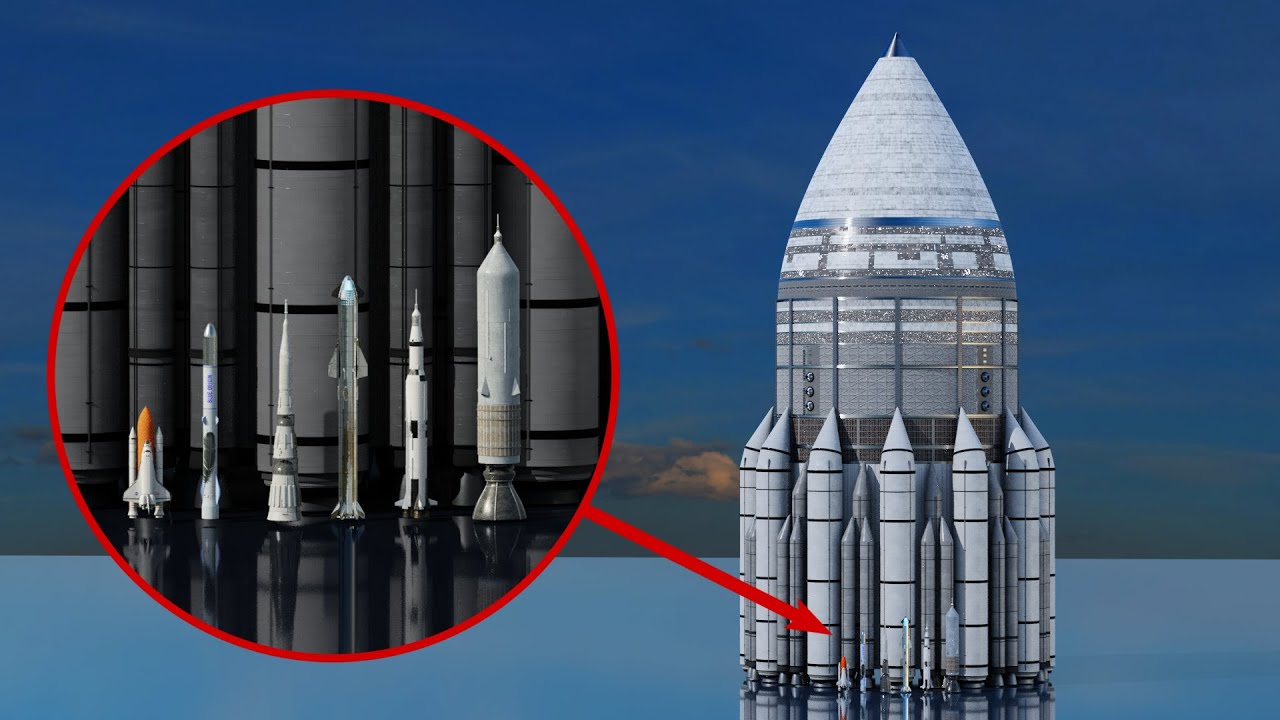In the 1950s and 1960s Project Orion explored the feasibility of powering spacecraft by exploding nuclear bombs which would drive them through a “pusher plate” and shock absorbing mechanism. As wacky as it may sound, the scheme appeared to be entirely workable, and delivered performance (high thrust and high specific impulse) far beyond any other candidate propulsion technology. Further, performance improved as the vehicle was scaled up: its designers envisioned a 4000 tonne interplanetary cruiser which could take humans on a round-trip to Saturn by 1970.
Lack of interest by NASA and the U.S. Air Force, whose budgets would not support developing the system or the missions it might enable, combined with worries over nuclear fallout resulting from launches from Earth and possible proliferation risks from manufacturing the thousands of nuclear bombs the ship would require, combined to reduce interest in the concept, and the adoption of test ban treaties prohibiting nuclear tests in space and the Outer Space Treaty which banned deployment of nuclear weapons in space were considered to have driven a stake through this most promising of space propulsion technologies.
Now, in a law review article, “Pulsed Nuclear Space Propulsion and International Law: Some Preliminary Observations” [PDF], law professor Glenn Reynolds (the Instapundit) and Juliet Leigh Outten say, “Not so fast”. A careful reading of the relevant treaties may not forbid development and deployment of an Orion-like system, and international law may not constrain states (including China) who are not parties to the Test Ban treaty, leading to a space race that motivates other states to exercise their option to withdraw from the treaty.
Viewing the legal issues surrounding an Orion launch in those terms, the discussion above indicates that there are no serious legal barriers to the deployment of an Orion spacecraft, or at least, no barriers serious enough to deter a nation otherwise determined to take advantage of Orion capabilities from doing so. International law is, of course, real law, but it is law whose sanctions tend to be weak and diffuse. The cost to a nation of violating international norms, unless those norms are very strong ones, tends to be small. And nations are willing to face some costs in pursuit of what they see as important objectives.
To a nation determined to achieve primacy in space, the Orion drive offers a very powerful tool for achieving that objective. While there are legal arguments against the deployment of an Orion spacecraft, they are not particularly strong arguments, and for each such argument there seems to be an at least equally plausible counterargument. In those circumstances, the legal cost of going forward seems likely to be very manageable
⋮
At any rate, as things stand, we face a future in which enthusiasm for nuclear pulse propulsion is likely to grow along with the intensity of competition for space resources and national prestige, and one in which international law is unlikely to stand as a significant barrier to such developments. Indeed, the enthusiasm for nuclear pulse propulsion may not be limited to governments, as figures like Jeff Bezos and Elon Musk lead the way in many areas of space development. Those wishing to see limits on Orion-type spacecraft would be well advised to seek new international agreements, rather than relying on treaties from the mid-20th Century.
Here is a Hazegrayart animation showing a large Orion craft departing the Earth. To reduce fallout, it uses solid rocket boosters to lift the main ship into the upper atmosphere before engaging the Orion drive.
